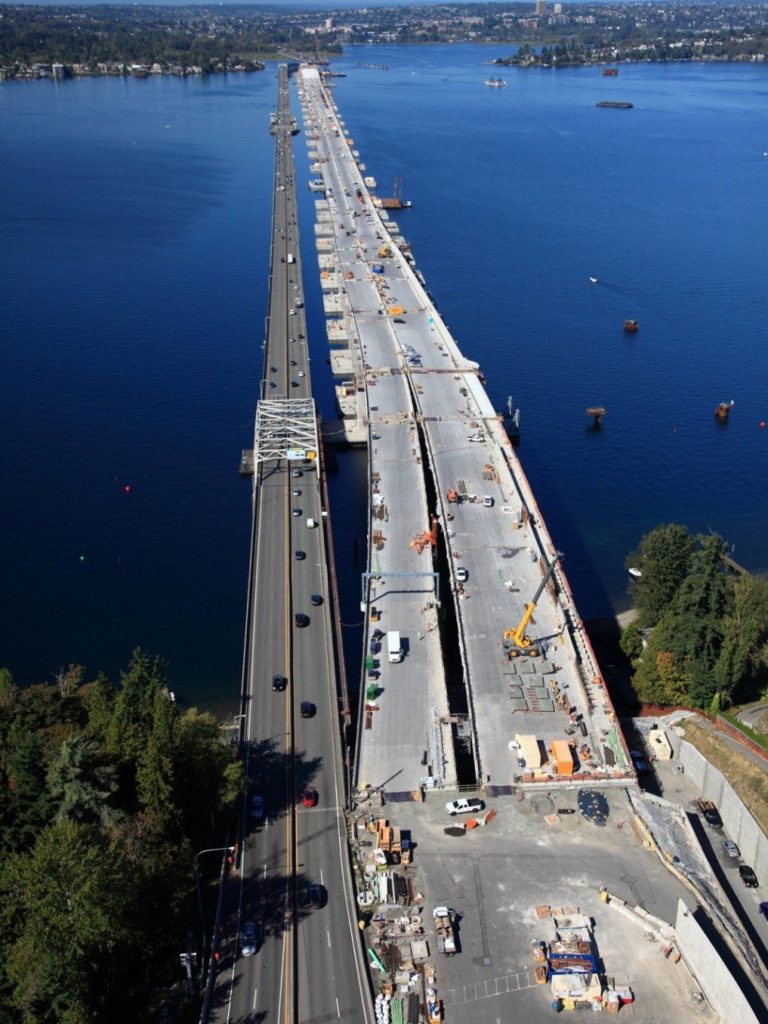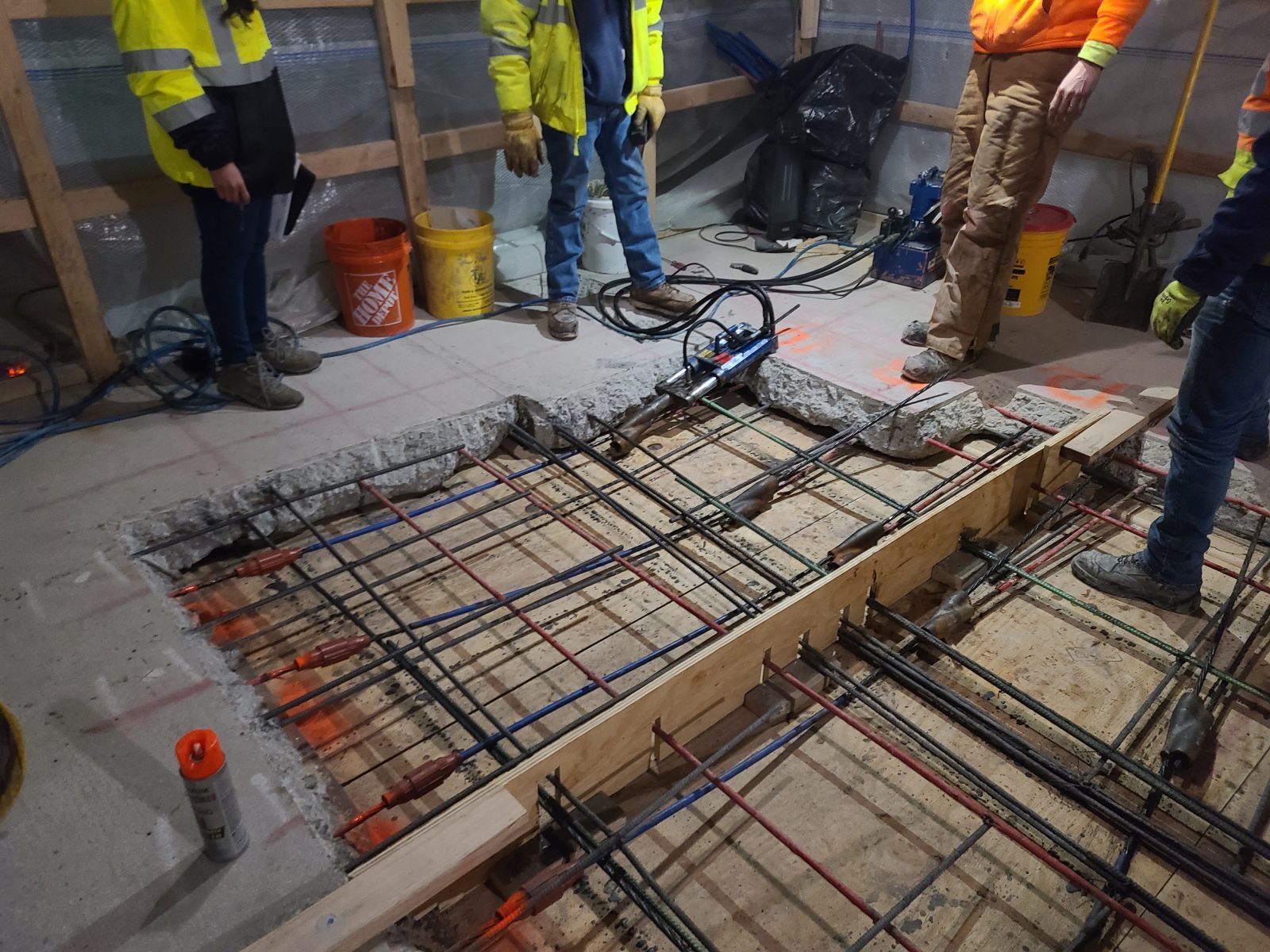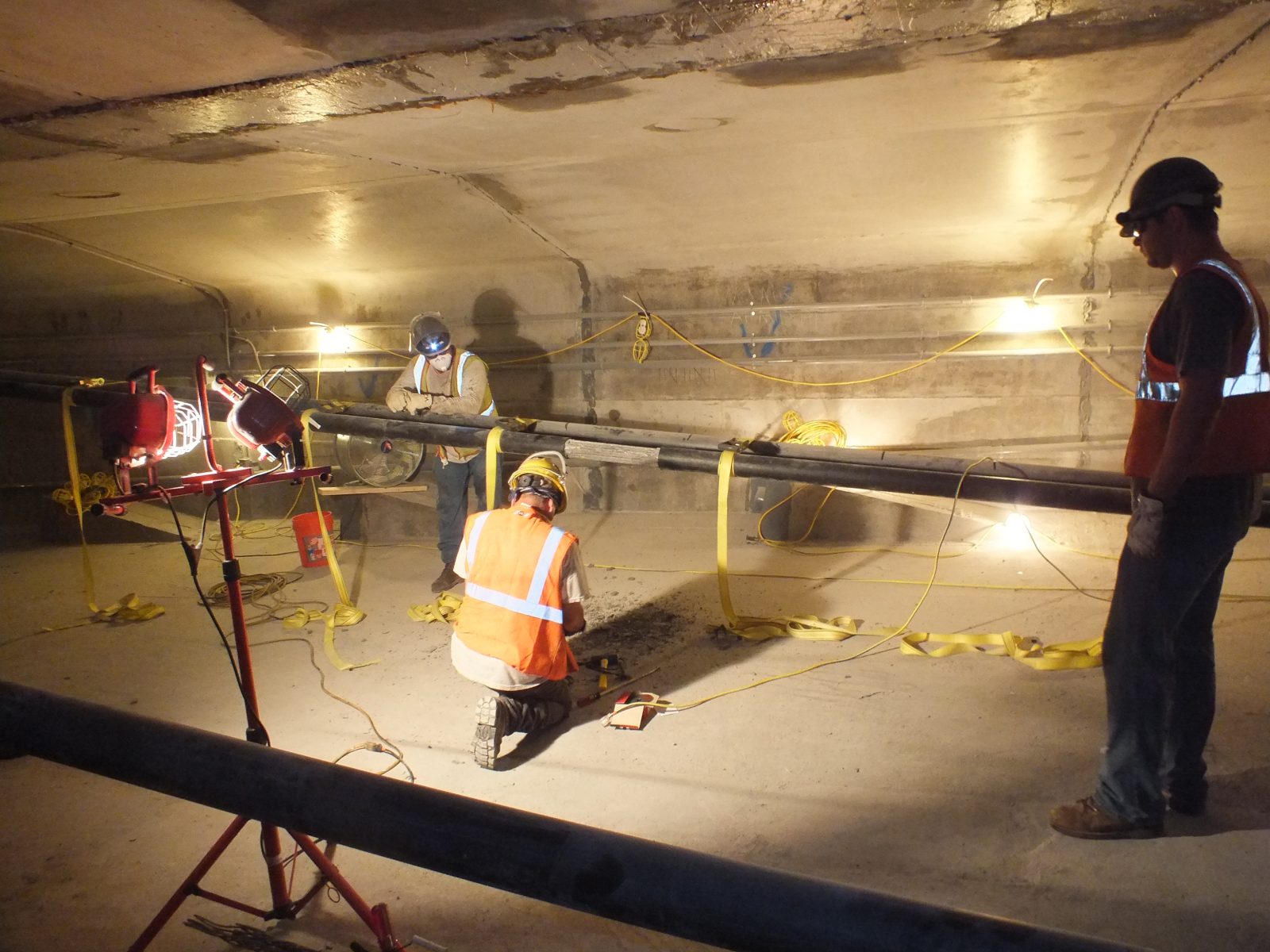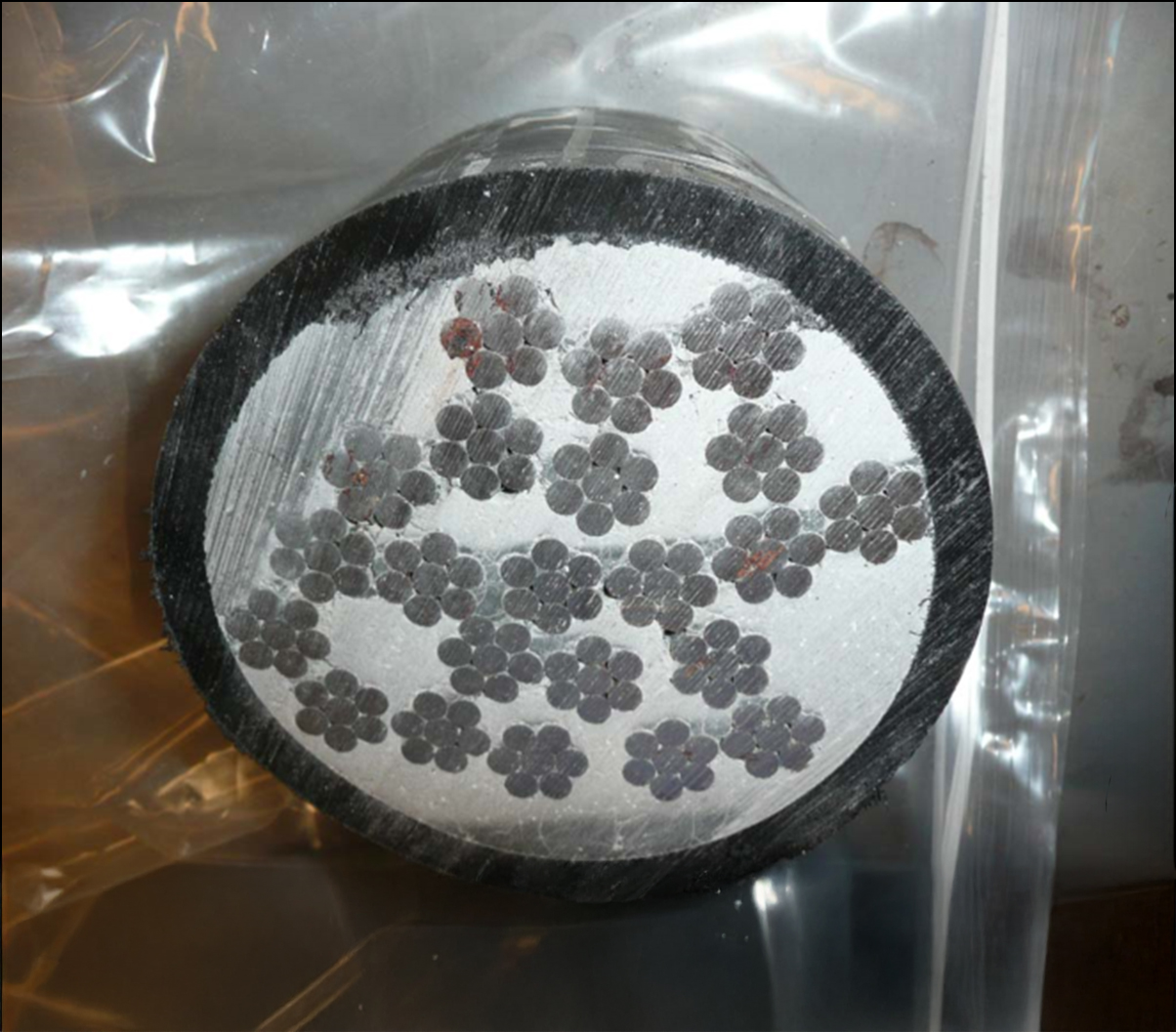Evaluating Post-Tensioning in Existing Structures

Post-tensioning is a common approach for reinforcing concrete structures like bridges, tanks, parking structures, and buildings. Tensioned internal or external steel tendons apply compressive force to concrete, which allows the designer to accomplish longer spans, reduce member thicknesses, and better control cracking. Understanding the condition of post-tensioning tendons is an important part of maintaining these types of concrete structures and can involve a variety of approaches and techniques, depending on the structure’s configuration.
POST-TENSIONING APPLICATIONS AND ISSUES
Post-tensioning can be unbonded or bonded, with each having its own advantages and disadvantages.
Unbonded
Unbonded post-tensioning is commonly used in building and parking structures and utilizes seven-wire strand tendons, bundled or distributed through floor slabs and beams. Older unbonded post-tensioning systems were comprised of individual wires together in a tendon, with the exterior of the wire bundle wrapped in paper to provide a bond break from the concrete. These older systems are commonly referred to as button-head post-tensioning because of the button-looking end of the wire at the anchorage. Modern post-tensioning systems comprise tendons in a plastic sheath with grease to protect the wires from corrosion. Depending on the generation of post-tensioning, the anchorages are fully encapsulated or exposed. Exposed anchorages are less durable than fully encapsulated systems.
There are also large multi-strand unbonded post-tension systems that use flexible filler (i.e., wax) to encapsulate and protect the strands from corrosion. These flexible filler systems are used in bridges and other large structures. Flexible fillers have been used in Europe for many years and are now starting to be used in North America.
- Advantages: Unbonded tendons offer more flexibility and take less time to install than bonded tendons.
- Disadvantages: They are at a higher risk for corrosion. Any damage to the sheath or unprotected anchorages can allow moisture and chlorides to reach the tendons. Paper-wrapped button-head systems provide minimal protection against the ingress of water and chlorides.

Bonded
Bonded post-tensioning is often used for bridges, tanks, or structures that are exposed to harsher environments, subject to constant use, or require long service lives. Bonded tendons are comprised of multiple seven-wire strands bundled into ducts filled with cementitious grout.
- Advantages: When properly installed, the grout provides better protection from corrosion activity.
- Disadvantages: Improper grouting can result in the formation of voids, segregation leading to soft grout, or contamination, leaving the tendons susceptible to accelerated deterioration.

TESTING THE CONDITION OF EXISTING POST-TENSIONING
Examining existing post-tensioning often requires a combination of techniques and approaches, depending on the conditions and construction. This typically begins with performing a visual survey and using ground penetrating radar to locate the embedded post-tension tendons. From there, the approach will vary depending on whether the tendons are unbonded or bonded.
Unbonded
Some of the tools available for investigating unbonded post-tensioning include:
- Examining the tendons in exploratory openings. This work requires assistance from experienced contractors to make openings in the concrete to expose the tendons. These contractors will also restore the grease, sheathing (if present), and concrete after the examinations are complete.
- Conducting screwdriver penetration testing to qualitatively assess whether the tendons are still tensioned.
- Applying lateral load testing using a calibrated test frame to determine the tendon’s tension force.
- Performing moisture testing to measure the relative humidity within the sheathing along the strand and estimate the risk for corrosion.
- Performing corrosion potential measurements of anchorages to determine the risk of corrosion activity. This can only be done on the anchorage of non-encapsulated tendons or on paper-wrapped button-head systems. For button-head systems, the corrosion potential method can also be used along the tendon length to determine the risk of corrosion for the wires that are in contact with the concrete through the paper wrapping.

Bonded
Nondestructive testing can assess bonded tendons to identify areas requiring further investigation. Some of these techniques include:
- Using impact echo or pulse velocity testing along the tendon length to identify voids, water, or soft grout.
- Employing a borescope to visually examine concealed conditions in voids with a small opening.
- Measuring magnetic flux leakage to identify breaks or areas with section loss in the strands.
- Examining the strands in exploratory openings. This work requires assistance from highly skilled contractors to make openings in the concrete and grouted duct to expose the tendons without damage, and restore the grout, duct, and concrete after performing the examinations.

CONCLUSION
Post-tensioned concrete structures rely on the integrity of the tendons to maintain their intended capacity. Identifying and mitigating deterioration or repairing damage to post-tensioning can help extend the useful life of these structures. The right investigative approach can reveal aspects about concealed conditions to inform a repair and maintenance plan, but it requires a thorough understanding of construction techniques, potential issues, and testing methods.